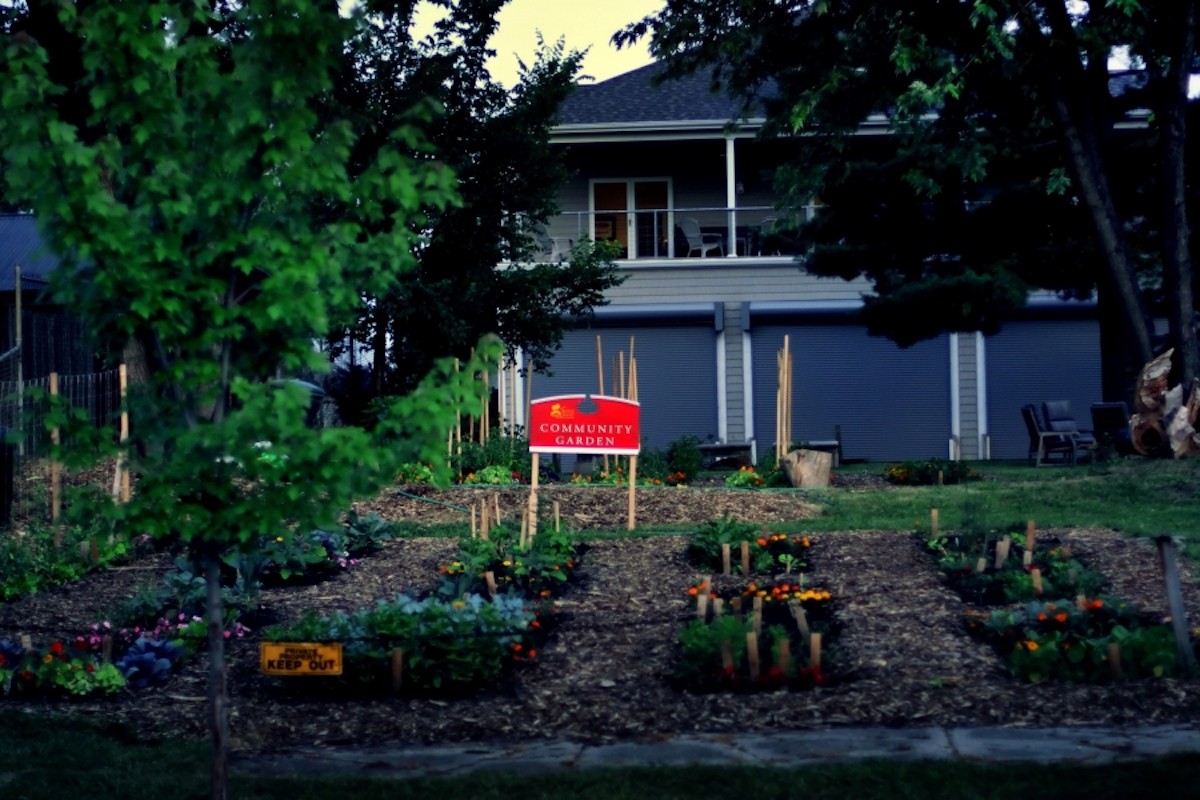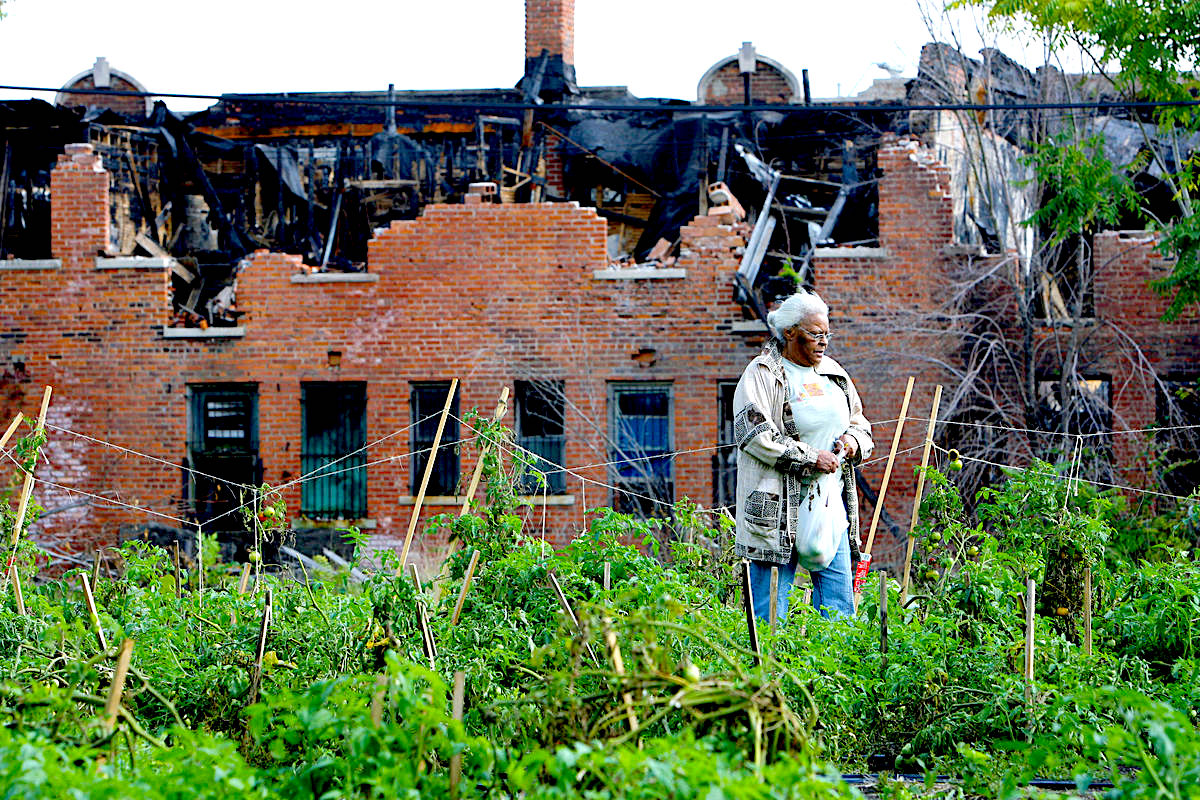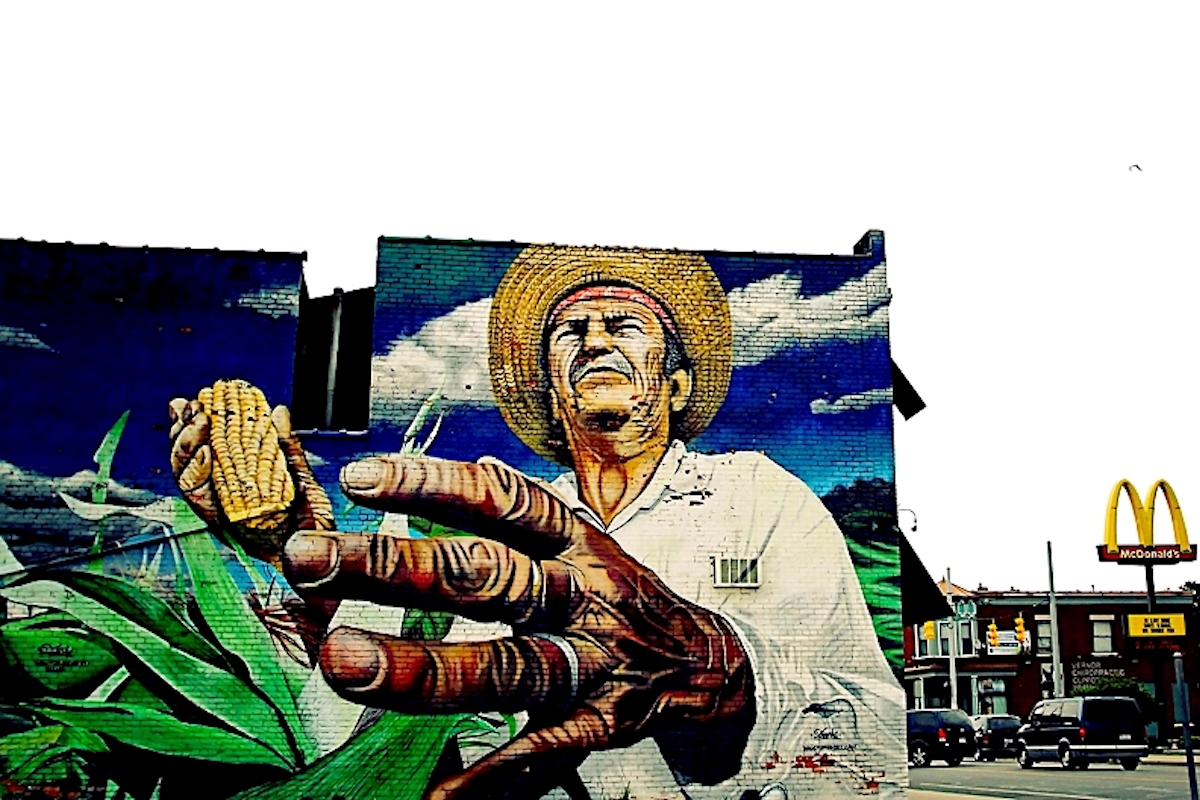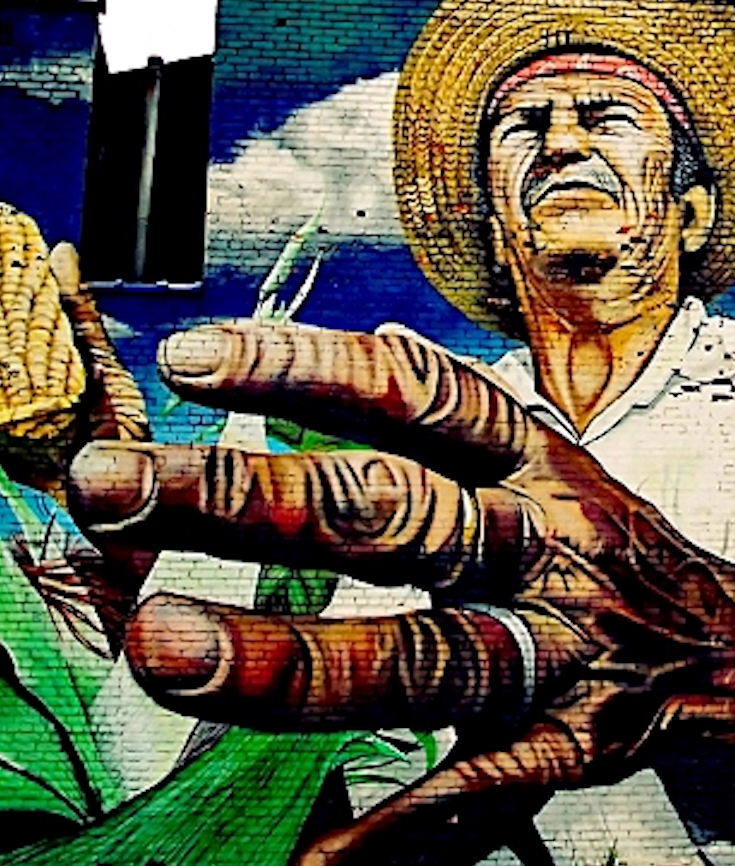[dropcap]On[/dropcap] this season of Working, we left the East Coast behind and flew to Detroit. We’re speaking with eight people who are drawing on the city’s complex history as they work to create its future.
For our second episode of the season, which you can listen to via the player above, we drove to Detroit’s North Corktown neighborhood. There, we met up with Greg Willerer, an urban farmer who grows a variety of organic crops on a few plots of carefully cultivated land, totaling a little more than an acre. We followed him as he made his rounds, being followed in turn by an adorable duckling that, according to Willerer, thinks it’s a person. If you listen carefully, you can hear it quacking away in the background throughout our conversation.
[mc4wp_form id=”6042″]
 A Harbor Island community garden | Cybelle Codish
A Harbor Island community garden | Cybelle Codish

 Garfield-Bunche Community Service Corp | Ryan Garza | The Flint Journal
Garfield-Bunche Community Service Corp | Ryan Garza | The Flint Journal

 A mural on Vernor Hwy. in Detroit, Michigan | Cybelle Codish
A mural on Vernor Hwy. in Detroit, Michigan | Cybelle Codish
Detroit is the most populous city in the U.S. state of Michigan, the largest city on the United States–Canada border, and the seat of Wayne County. The municipality of Detroit had a 2015 estimated population of 677,116, making it the 21st-most populous city in the United States. The metropolitan area, known as Metro Detroit, is home to 4.3 million people, making it the second-largest in the Midwest.
Detroit is a major port on the Detroit River, one of four major straits that connect the Great Lakes system to the Saint Lawrence Seaway. The Detroit Metropolitan Airport is among the most important hubs in the United States. The City of Detroit anchors the second-largest economic region in the Midwest, behind Chicago, and the thirteenth-largest in the United States. Detroit and its neighboring Canadian city Windsor are connected through a tunnel and the Ambassador Bridge, the busiest international crossing in North America.[9] Detroit is best known as the center of the American automobile industry, and the “Big Three” auto manufacturers General Motors, Ford, and Chrysler are all headquartered in Metro Detroit.
Detroit was founded on July 24, 1701 by the French explorer and adventurer Antoine de la Mothe Cadillac and a party of settlers. During the 19th century, it became an important industrial hub at the center of the Great Lakes region. With expansion of the auto industry in the early 20th century, the city and its suburbs experienced rapid growth, and by the 1940s, the city had become the fourth-largest in the country. However, due to industrial restructuring, the loss of jobs in the auto industry, and rapid suburbanization, Detroit lost considerable population from the late 20th century to the present. Since reaching a peak of 1.8 million at the 1950 census, Detroit’s population has declined by more than 60 per cent. In 2013, Detroit became the largest U.S. city to file for bankruptcy, which it successfully exited in December 2014, when the city government regained control of Detroit’s finances. (Wikipedia).


You must be logged in to post a comment.